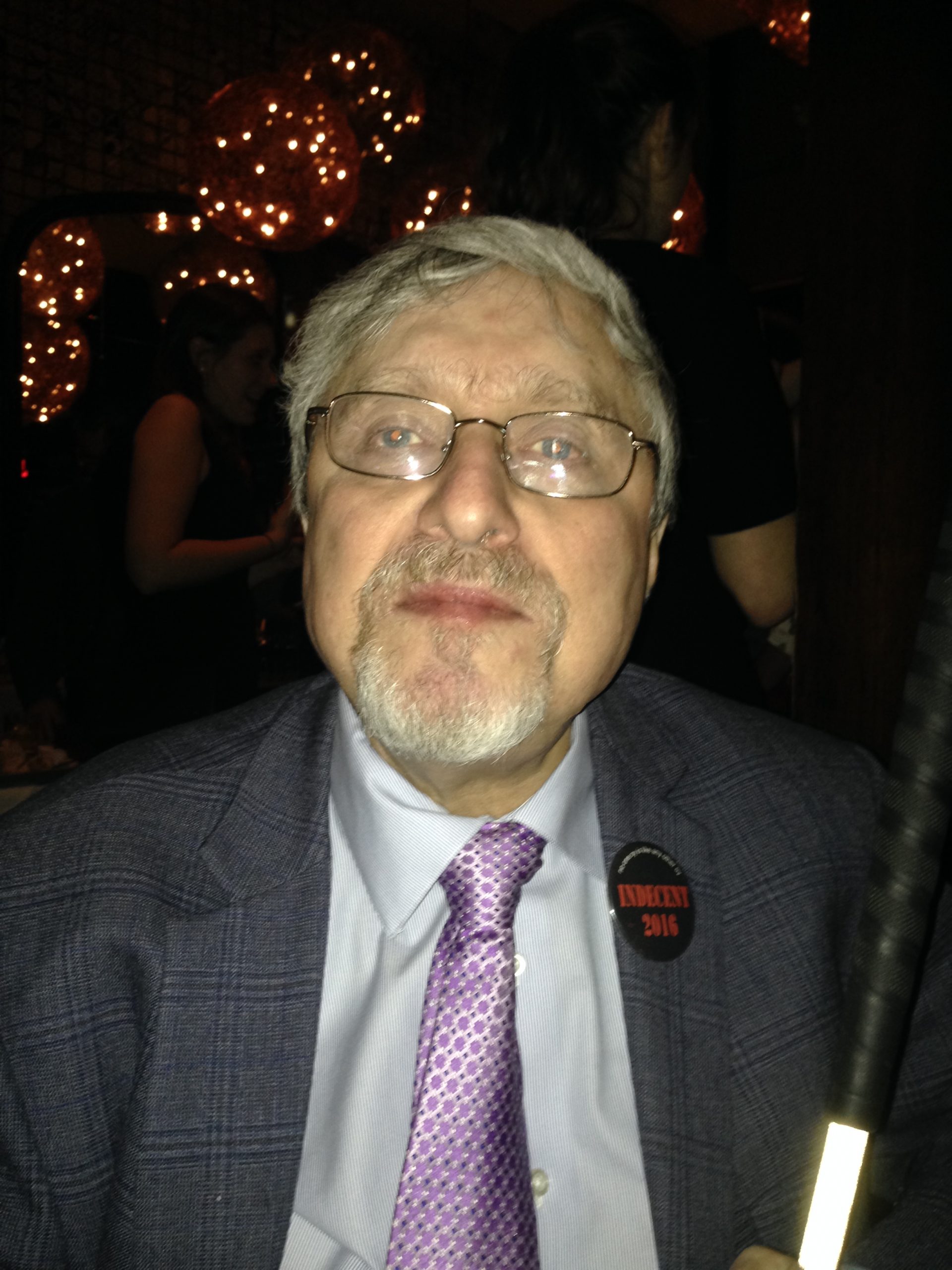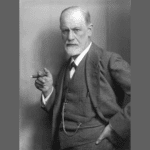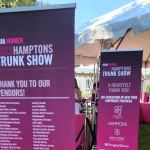The 21st Century has been a time of tremendous resurgence for Yiddish, the beloved mame-loshn (mother tongue) of Eastern European Jewry. It is no longer only a language of nostalgia and distant memory. For many, young and old, Yiddish is the essence of their Jewish identity.
As the pandemic of 2020 forced humanity to interact via computer, there arose an unprecedented opportunity for introspection and worldwide community building. Event organizers who had struggled to sell 200 tickets to live Yiddish concerts in local venues, were now dealing with a potential worldwide audience and attendance in the thousands. Yiddish festivals became global online gatherings of Yiddish artists collaborating across continents – freed from the constraints of travel, lodging, and visas. Everyone could participate from home, and innovative producers learned how to create ensemble sounds, recording tracks and sending the recordings to each musician to add his or her part. The results were often stunning, soulful gems of Klezmer and Yiddish music. Artists organized online conferences to connect with one another and share experiences, trying to stay engaged with their art during the Covid lockdown. A Yiddish song competition based in Brazil attracted dozens of submissions from near and far. A Yiddish Passover seder (traditional holiday meal) attended by thousands, enjoyed the sponsorship of international Yiddish organizations and festivals.
 In early December 2020, an all-star gala “Yiddish Spectacular” presented – on Zoom – by the Folksbiene – the National Yiddish Theatre – reached 30,000 viewers – enough to fill Carnegie Hall ten times. The result was a respectable fundraising success.
In early December 2020, an all-star gala “Yiddish Spectacular” presented – on Zoom – by the Folksbiene – the National Yiddish Theatre – reached 30,000 viewers – enough to fill Carnegie Hall ten times. The result was a respectable fundraising success.
2020 was the 100th anniversary of The Dybbuk, S. Ansky’s transcendental play about love beyond the earthly world. It is the most well known of all Yiddish plays. The famed Yiddish actor Shane Baker had long planned to organize a special production in honor of the play’s centennial. As it became clear that live theater, like all in person performing arts had slipped into a global coma, the decision was made to create a virtual stage, with actors recording their roles in front of cameras, never actually standing next to one another. The brilliant planning and meticulous execution of the project by director Allen Lewis Rickman, created a theatrical masterpiece. Scenes felt intimate, the dialogue was earnest and intense, and the storytelling was impeccably paced. Most impressive was the sense that we, the audience, were there, in a 19th century Polish shtetl, interacting with the characters as they performed an exorcism. The cast included Yiddish luminaries from Tel Aviv, Strasbourg, Los Angeles, Berlin, and New York, among other places. Since its premiere on YouTube December 14, 2020, The Dybbuk has attracted many thousands of views – far more than a run in a small New York Theater might have generated.
The 1980’s were ripe for the rebirth of Yiddish among the post war generation. For example, Klezmer, a uniquely Yiddish musical style, captured the imaginations of some amazing young musicians. In Boston, a 25 year old Hankus Netsky, inspired by the soulful improvisational Jewish music recordings of an earlier generation, created the Klezmer Conservatory Band – an ensemble of young, classically trained, innovative young musicians. The San Francisco based Klezmorim (Klezmer musicians) were invited to rock and folk festivals from coast to coast. Klezmer quickly became a worldwide musical movement – a genre that attracted brilliant virtuosos, and became a mainstay of contemporary Jewish musical culture. Klezkamp, founded and directed by Klezmer pioneer Henry Sapoznik, was among the earliest manifestations of Yiddish becoming the vernacular of choice of a new generation of artists and intellectuals.
Yiddish New York came into being to fill the void created when Klezkamp ended its annual winter retreats in the Catskills. The annual festival epitomizes the multi-generational embrace of Yiddish, and is a five day gathering of musicians, teachers, actors, comedians, and Yiddish lovers of all ages, genders, backgrounds, and affiliations. Events begin in the early morning and last until the middle of the night.
A high point of Yiddish New York is the annual “Dreaming In Yiddish” concert dedicated to the memory of the great singer, scholar, teacher, and mentor Adrienne Cooper, a leader of the Klezkamp community and the international Yiddish revival. The concert includes the presentation of the annual “Dreaming In Yiddish” Award, given to an individual who has devoted his/her life’s work to the preservation and perpetuation of Yiddish language and culture. Shane Baker was the recipient of the 2020 prize. Baker, an actor, writer, and activist known for cross-dressing characters and routines, has an absolute love and devotion to his adopted Yiddish culture – which motivated his initiative to produce The Dybbuk.
“Ample signs of the revitalization of Yiddish are widely visible.”
Ample signs of the revitalization of Yiddish are widely visible. Yiddish theater companies in Montreal, Melbourne, Tel Aviv, and New York have continued uninterrupted runs over many decades. A new Yiddish opera by Frank London premiered in Havana. Daniel Kahn’s Yiddish translation of Leonard Cohen’s Hallelujah scored well over a million views on YouTube. Yiddish cultural gatherings, festivals, language courses, and conversation groups are proliferating worldwide.
A majority of those who fostered the blossoming of Yiddish language and culture do not communicate primarily in Yiddish, yet, working for its preservation largely defines who they are. In contrast, Yiddish is the spoken language of hundreds of thousands of Chassidim, (Ultra Orthodox Jews) for whom it is an aspect of the lifestyle that separates them from the secular Jewish and non-Jewish worlds. In the Chassidic world, there is a dynamic Yiddish music scene, complete with superstars, hit songs, first rate musical arrangements, and professional, high quality production. Interaction between the Chassidic and secular Yiddish music scenes is, however, very rare since listening to the voices of women is forbidden to Chassidic men.
There is a consensus among critics and audiences alike that the Joel Grey/Zalmen Mlotek production of Fiddler On the Roof, in Yiddish, is “the most moving, indeed, the finest production of the iconic musical ever produced.” The Yiddish Fiddler was the ultimate symbol of the Yiddish revival, drawing massive audiences, who “came home” to Sholem Aleichem’s Anatevka. Though most cast members were not Yiddish speakers, their performances of these moving, at times, intimate scenes in the authentic language of the shetl, (European Jewish village) inspired a deep connection to that special world, and added to its magic.
For Zalman Mlotek, the production of the Yiddish Fiddler was the culmination of a lifetime of work inspiring whole communities to fall in love with mame loshn. The son of Yiddish song anthologist and scholar, Chana Mlotek, and the charismatic writer, teacher, and towering Yiddish world personality Yosl Mlotek, Zalmen had been a teenage prodigy. Over several seasons, he turned the summer camp he attended into a Yiddish theater and musical paradise for hundreds of children. In 1970, he discovered the Israeli cast recording of Fiddler On the Roof in Yiddish and staged a charming production with the campers of Camp Hemshekh (Continuity). A seed had been planted, which blossomed years later when, as artistic director of the National Yiddish Theatre Folksbiene, Mlotek secured the rights for the Yiddish translation of Fidler by Shraga Friedman.
In 1984, Zalman and I created and produced The Golden Land, a musical theater production telling the story of the Jewish immigrants of the late 19th and early 20th centuries. The play was performed in English and Yiddish at a time when Yiddish theater was struggling to attract an audience. Attrition and time had taken their toll on the dwindling Yiddish speaking audiences. The core of The Golden Land was its homage to Yiddish. The show was a tremendous success, attracting packed houses. The show had a national tour and has had numerous revivals during the following decades. The Golden Land struck a chord, ignited the pintele Yid – the Jewish spark – and engendered a soul connection with audiences far more diverse than those who had attended traditional Yiddish theater. An American born generation watched its parents and grandparents on stage, depicted as young immigrants who endured and overcame so much hardship to build new lives. The music was personal, illuminating memories hidden in their subconscious minds. While not everyone could express such feelings, the overall joy and enthusiastic reception was enormous.
Around the world, enormous music and art festivals focus on Yiddish. From Amherst, Massachusetts (home of the Yiddish Book Center) to Sao Paulo, from Warsaw to Weimar, Tel Aviv to Toronto, New York to Quebec’s Laurentian Mountains, the embrace of Yiddish dominates gatherings of artists, musicians and scholars. A global community of artists continues to create and innovate in their beloved, flourishing Yiddish.
For much of the 20th century, there was, admittedly, an ambivalence about Yiddish in the Jewish world. It was seen as the language of golus – of exile and dispersion. With the 1948 declaration of Israeli independence, the Jewish world rallied to the cause of Zionism, helping make the miracle of Israel an indelible reality. The State of Israel was the pathway to Jewish nationhood, Jewish pride, and dignity. It was natural that the language of the Jewish State be Hebrew, the modern iteration of the biblical language shared by Ashkenazi and Sephardi Jews.
For the hundreds of thousands of Yiddish speaking Eastern European Holocaust survivors, assimilation into Israeli society and the use of modern Hebrew language was a challenge. Yiddish, sadly, was sidelined during Israel’s early decades. Yiddish theater, though popular, was subject to language penalties and taxes. To some fervant Hebreists Yiddish was denigrated as the language of the Holocaust victims, said to have gone “like sheep to the slaughter.” Shelichim (emissaries) were sent to Jewish communities around the world to encourage teachers in Jewish schools to discontinue the use of Yiddish as the language of instruction. The language of Eastern European Jews was marginalized.
In North America, other factors were taking a toll on the destiny of Yiddish. Waves of immigrants in the late 19th, early 20th century created massive communities, filling the air with the sounds of Yiddish and its many distinct dialects, establishing a thriving Yiddish theater, networks of Yiddish schools, dozens of Yiddish newspapers and magazines, the pressures of assimilation on ensuing generations drew them away from the language. In many cases the immigrant parents themselves wanted to protect their children from the stigma of being seen as a “greenhorn” (derogatory term for newcomer). How common was it to hear “My parents spoke Yiddish, but only when they didn’t want me to understand what they were saying.”?
There was also the natural desire to identify with Israel, and the Jewish world rallied to its support. The Jewish language of education and identification shifted from Yiddish to Hebrew. There were periods when Yiddish was the subject of comedy and self-effacing humor. The death of the language was predicted in the early 1900’s by none other than the publisher of the largest Yiddish daily newspaper – the Forward – Abraham Cahan. That prediction was countered many years later when the Yiddish novelist Isaac Bashevis Singer, as he accepted the Nobel Prize for Literature, declared Cahan’s prediction “greatly exaggerated.”
Montreal, where I grew up, was a bastion of Yiddish cultural activism, especially in the decades following the Second World War. Its two largest day schools, the Peretz Shule (School) d the Jewish People’s School (Folk-shule) taught all Jewish subjects, including Hebrew and biblical studies using Yiddish as the language of instruction. The city was home to a large community of Yiddish writers and intellectuals. Political movements promoted Yiddish culture alongside social activism, organizing choirs, conferences, frequent lectures and afternoon Yiddish schools for kids who attended public school. The Jewish Public Library was a hotbed of Yiddish scholarship and culture. Two leaders of the Yiddish revival in Montreal were ultimately awarded the Order of Canada, the Canadian equivalent of knighthood: Sara Rosenfeld, my mother, who was the director of the Committee for Yiddish at the Canadian Jewish Congress, and Dora Wasserman, the charismatic creator of a Yiddish theater that has been one of the community’s most cherished institutions since the 1960’s. A high point of Montreal’s central role in the Yiddish revival, was a massive Yiddish theater festival organized by Bryna Wasserman, who, as director of the Yiddish theater founded by her mother, and of the iconic Segal Cultural Center, brought Yiddish theater companies from places as diverse as Poland, Rumania, Israel, the US, Australia, and other locations to Montreal for an unprecedented celebration of the culture that has been, and continues to be part of the community’s heartbeat.
The post Holocaust decades witnessed a dynamic period of Yiddish creativity. The civilization and culture of Yiddish were in an incredible period of growth. The remnants of Europe’s Jews passionately strove to recover their interrupted lives, and reclaim their cultural identity. Wherever survivors settled and established a community, an infrastructure was created to encourage Yiddish continuity. Schools were established; Yiddish literature flourished; Yiddish melodies wove their way into popular music; Yiddish lectures, conferences, magazines, summer camps, and schools gained strength. There was vitality among the survivors that enhanced the efforts of those who had immigrated before World War II. The survivors mission was to rebuild and save the language of their murdered communities. With creativity and charisma, they kept the torch ablaze, diligently working to pass it to the next generation – the first born outside Eastern Europe after the Holocaust.
Today, Yiddish courses are proliferating, available at universities and independent programs worldwide. The largest online program is offered by the Arbeter Ring – the New York based Worker’s Circle. According to program founder and director, Nikolai Borodulin, 2020 was a banner year for online Yiddish learning. In 3 semesters – Spring, Summer and Fall – over 1000 students from 27 countries and 30 U.S. states participated. In the Fall of 2020, 40 classes enrolled 480 students, at all levels of Yiddish knowledge. The faculty included18 teachers from 6 countries – Israel, the U.K., France, Argentina, Lithuania, and the United States.
The many brilliant and courageous leaders, past and present, who have made the continuity of Yiddish the cornerstone of their life’s mission deserve the gratitude of the Jewish People for preserving this massive treasure as a cherished legacy.

The Author
Moishe Rosenfeld, a concert and theater producer and writer, heads Golden Land Concerts & Connections, a concert booking agency with a roster of leading Jewish and Israeli performing artists. He has acted in film and Yiddish theater, and, from 1982 – 2000, presented a daily news program in Yiddish on WEVD. Rosenfeld co-created and produced three successful musical theater shows, and has organized concerts in major New York venues. Yiddish always plays a central role in his personal and professional lives.







